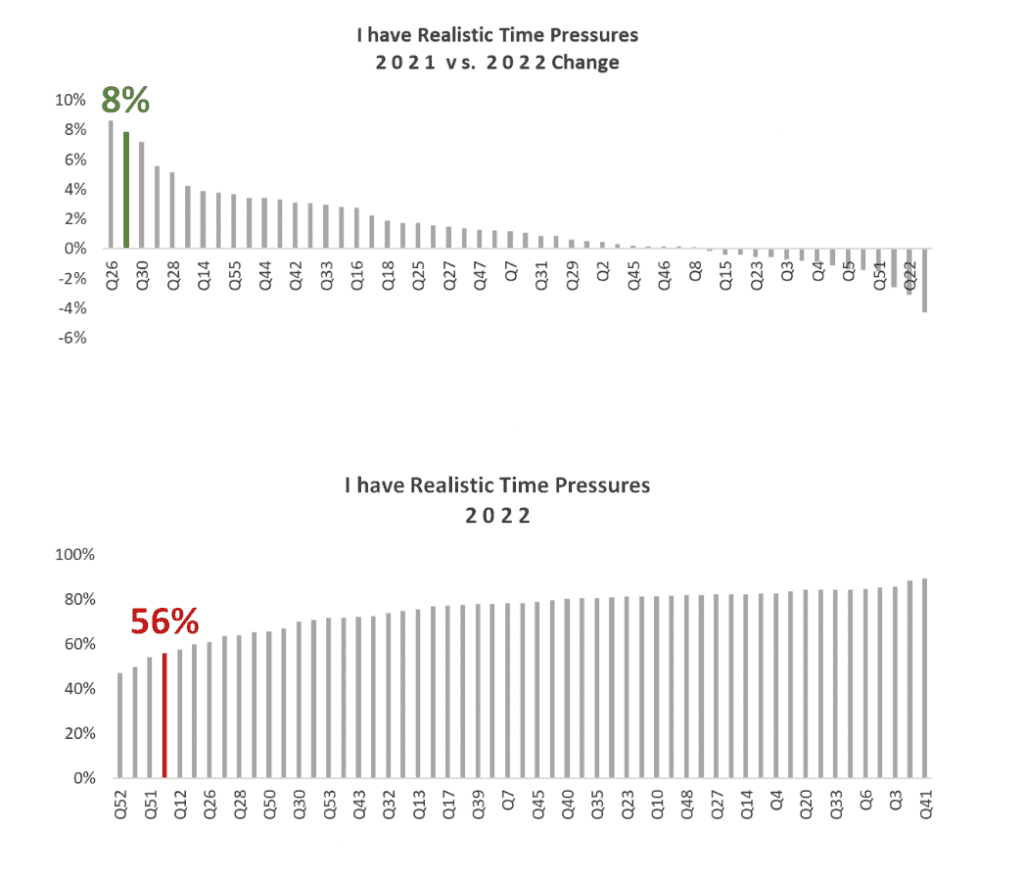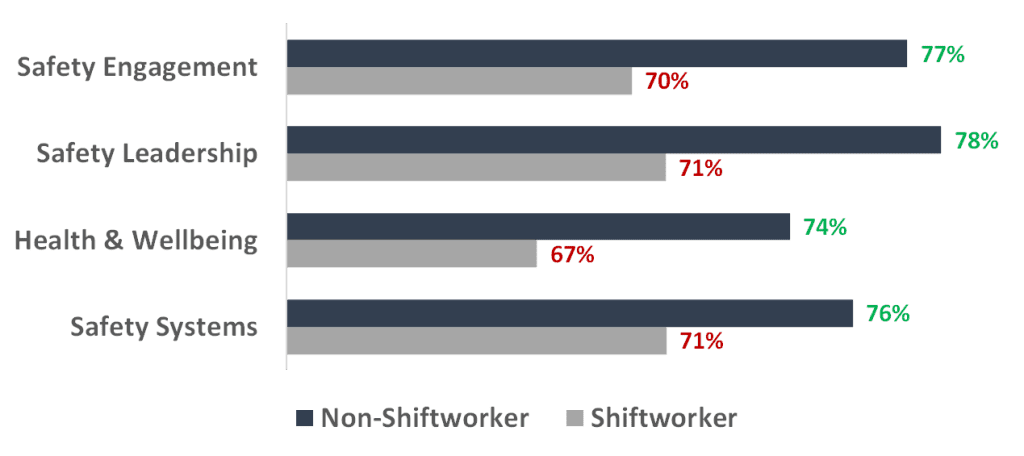Overview
What is guiding decisions of your company? More importantly, how can you tell if this approach is working to achieve the best results?
Each year the Health and Safety Index reviews benchmark data to understand trends, hotspots and insights to share learning. A company is often like a well-oiled machine. It requires a service every so often to ensure everything is in working order, identify blind spots within specific cohorts and address preventative measures to improve.
Our Health and Safety Index tool is a simple online survey enabling organisations to measure, focus and act on improvements that matter. Join us in reviewing the trends from 2022 as we look to improve the year ahead in the health and safety industry!
Benchmarks 2021 vs 2022
The overall Health and Safety Index results from 2021 vs 2022 were relatively stable increasing by 1%. Notwithstanding this, there were specific areas that had much larger shifts, and we continued to see certain trends continue year-on-year from 2020.
Of our four Aspects, Health & Wellbeing continued to be the lowest scoring area.

Health & Wellbeing benchmark questions, realistic time pressures (56%) and change management consultation (57%) were the poorest results.
One of the benefits of evaluating several health and safety Aspects is understanding to interdependencies, e.g.
- Time Pressures: Do unrealistic times impact mental health and/or safety shortcuts?
- Change Management: Does clear communication and expectations help with employee engagement?
When identifying trends, we can see that worker realistic time pressures improved by 8% from 2021. Despite this improvement, time pressure is the fourth worst results of 55 questions

Negative Trends
Largest Decline in 2022
‘Accessible, clear, and easy to use WHS processes’
As technology improves, expectations of a new norm also shift. The User Experience (UX) of software inside a workplace and the outside are independent. Not all workplaces have the sane capability, capacity and resources as Apple and Commonwealth Bank. Despite this potential gap, it’s worth organisations acknowledging the need to adapt and cater for shifting expectations on accessible, clear, and easy to use WHS processes.
Focus Group: shift workers vs non-shift workers
When presented benchmark data, it’s important to consider not just how this impacts the individual, but different groups within the workplace. Shift workers are typically the minority in many organisations. Health and Safety Index results are consistently lower with Shiftworker’s.

There is also a drastic difference between sleep for shift workers and non-shift workers:
“In the last four weeks, work has negatively impacted on my ability to sleep”.
Shift workers à 39%
Non-shift workers à 55%
Levers for Action
The Health and Safety Index has been designed to provide ‘Levers’ for action. We provide approximately 12 possible levers for action to provide guidance on strategic choices.
The example below provides an example of two Levers related to Health & Wellbeing. Often it’s a balance of recognising higher positive scores, vs lower results needing attention.
In this example, we would recommend to addressing change consultation and realistic time pressures. This is often best achieved by leveraging higher leadership scores (positive results) as an enabler for improvement.

The Health and Safety Index enables organisations to understand correlations and the relationship between data sets. This provides guidance on actions for improvement that potentially enables the best Return on Investment (ROI).
Psychosocial Levers for Action
Based on our 2022 benchmark data analysis, we recommend four core areas to improve Health & Well-being in the workplace.
- Job Control
- Change Management
- Supportive Enviro
- Values & Beliefs
Thanks for your interest in the Health and Safety Index. For more information about these Levers and strategies to address health and safety improvements, contact us. E: [email protected] P: +61 1300 909 649 |
